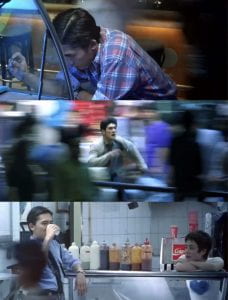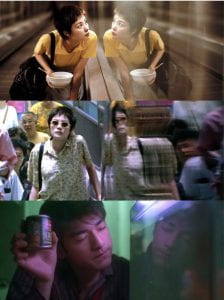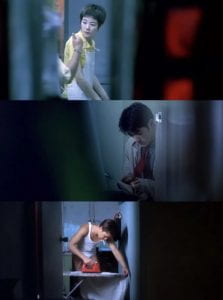The subject of my research is about analyzing a director’s film work-“Chungking Express”. The filmmaker is Wong Kar Wai, a Chinese director.The narrative structure in Wong Kar-wai’s films is as unique as his visual expression. Wong Kar-wai’s movies do not focus on the story itself, but present a kind of artistic conception. Most of his films consist of broken narrative fragments. The advantage of this “fragmented” narrative method is that it gives the story extension and gives the audience enough room for imagination.It is precisely because of this kind of narrative that after watching the movie, people’s minds will show the actors’ performances. And an indescribable sense of haziness. This atmosphere is created by the combination of color and shot. “Chungking Express” left me a deep impression of casualness, beauty and abstraction.Its main content is to tell two love stories: an urban encounter between a broken-in love policeman and a mysterious female killer, and a love story between Patrol 663 and a girl in a fast food restaurant. The two stories have nothing to do with each other, and there is no intertwined plot.The film is full of a lot of voice-overs, but its voice-overs do not promote the plot. These two stories combined novel shooting angles and colors to express the same theme-the love that everyone pursued in that period.The film uses a lot of camera movement and novel shooting angles .As shown in the picture below, because of the use of camera motion and editing to form a-step printing. There is also mirror shooting-using the reflection of mirrors and other materials to form overlapping shadows or symmetry, etc. I will analyze these aspects from the picture composition and types of camera shots.What impresses me most is these scenes.
When the patrol officer who changed the night snack for the flight attendant’s girlfriend came to the fast food restaurant again, the owner continued to promote sale for him the new supper. The waitress in the fast food restaurant was wiping the glass while secretly listening to their conversation. At this time, a very wonderful picture composition appeared. The waitress was wiping two machines in the shop. At the same time, the director creatively arranged the patrol police in the gap between the two machines in our field of vision.Nearly two-thirds of the screen on both sides are black shadows on the back of the machine, and in the only one-third in the middle, the patrol officer smiles helplessly under the light.
In the crevice of composition is clever, on the one hand, gives a sense of voyeurism. This coincides with the behavior of waitress who frequently looks back and listens;On the other hand, the gap creates a narrow visual effect. In short, shooting the patrol policeman in the cracks seems to be smiling but helpless. After leaving his girlfriend, his sense of depression and loneliness in his inner world is well expressed in such a small space. (Movie clip at the bottom)
The following pictures are all shot in this format in the movie. In this way, the main character is placed in the gap of a virtual foreground, which can not only highlight the character, but also guide the viewer’s attention to create a peeping third perspective.
In the film, when the police call friends one by one at the fast food restaurant, there is a Dutch Tilt composition. I am very impressed, it will make me want to feel his loneliness.
In addition, the photographer placed the constable in the center of the golden section of the screen, which is one of the techniques used by the photographer and director to express the psychological activities of the characters.The director used the zoom lens and character position processing to make the movie protagonist become a social microcosm: the loneliness, emptiness, loneliness, helplessness of the people on the fringe of the city…so that his back to the fish tank and the coffee cat doll on the opposite side were talking to himself.
In terms of scenes, the scenes of this movie basically didn’t use wide shots. Most of them are medium shots and close up. These scene changes make the film rhythm tight and the sense of rhythm more tense. The sense of tableau’s contain on the audience’s attention is strengthened. These are well reflected in the shootout part of the killer in the first part and the sleepwalking part of the waitress in the second part.At the same time, a lot of shallow depth of field is used in the film. On the one hand, the use of shallow depth of field makes the atmosphere more depressing, which is conducive to the intensification of contradictions or ready to go; on the other hand, the shallow depth of field makes the characters always clear, but the background is often blurred, giving people a feeling that they can be seen but cannot be approached.
In his usual inexplicable way, Wong Kar-wai described in detail the fast food-style love pursued by a group of small people in the urban forest that is hard to escape. Through these shooting angles, the film expresses disorder, accident, and unpredictability, but it can’t escape this forest of desire.





